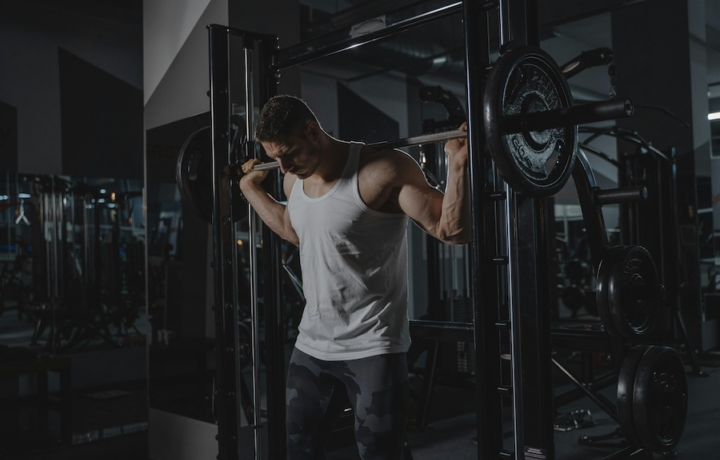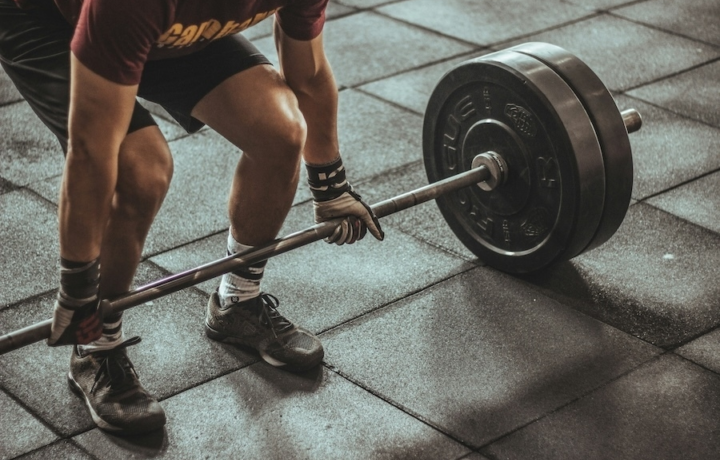Exercise
Butt Kicks

Butt Kicks
How to Perform
- Stand tall with your feet hip-width apart, arms relaxed at your sides, and core engaged to maintain a neutral spine.
- Begin jogging in place at a moderate pace, focusing on keeping your weight centered over the balls of your feet while maintaining an upright posture.
- Bend your right knee and kick your right heel up toward your buttocks, bringing it as close as possible while keeping your thigh relatively perpendicular to the ground.
- As your right foot returns to the ground, immediately bend your left knee and kick your left heel up toward your buttocks in the same manner, creating an alternating pattern.
- Allow your arms to swing naturally in opposition to your legs, keeping your elbows bent at approximately 90 degrees and hands relaxed.
- Maintain a consistent breathing pattern, inhaling through your nose for 2-3 kicks and exhaling through your mouth for the next 2-3 kicks.
- Keep your core tight and shoulders relaxed throughout the movement, avoiding any forward lean or tension in your upper body.
- Gradually increase your speed and height of kicks as you warm up, maintaining control and proper form throughout the exercise.
Important information
- Focus on bringing your heels directly to your glutes rather than kicking outward or to the sides.
- Keep your knees pointing downward throughout the movement, avoiding letting them splay outward.
- Land softly on the balls of your feet with each step to minimize impact and protect your joints.
- If you experience any knee discomfort, reduce the height of your kicks or slow down your pace.

Butt Kicks
Exercise Details
Primary Muscles
Muscle Groups
Mechanic
Built for progress
Take the guesswork out of training
Create personalized AI-powered workout plans that evolve with you. Train smarter, track every rep and keep moving forward, one workout at a time.






Butt kicks are a dynamic, high-energy exercise that serves as an excellent addition to any fitness routine, particularly for beginners looking to build lower body strength and cardiovascular endurance. This accessible movement primarily targets the hamstrings while also engaging the glutes, making it a focused yet comprehensive lower body exercise that delivers impressive results with proper form and consistent practice.
Many fitness professionals incorporate butt kicks into HIIT circuits due to their ability to quickly elevate heart rate and create metabolic demand without complex movement patterns. However, their versatility extends beyond intense training sessions, as they also function perfectly as part of a thorough warm-up sequence to prepare the posterior chain for more demanding exercises, or as a cool-down activity to facilitate recovery while maintaining elevated circulation.
The beauty of butt kicks lies in their dual benefits – simultaneously developing muscular endurance in the hamstrings and glutes while providing an effective cardio stimulus that improves aerobic capacity. The rhythmic nature of this movement challenges your cardiovascular system similarly to jogging but with increased posterior chain activation, creating a more balanced lower body workout that complements other common exercises like high knees or jumping jacks.
For those monitoring their fitness progress, butt kicks offer a measurable benchmark – tracking improvements in speed, duration, and technical execution provides tangible evidence of developing endurance and coordination. As your fitness level advances, you can naturally increase the intensity by performing the movement with greater speed or for extended durations without needing to modify the basic exercise pattern.
Whether incorporated into a dedicated training session or used as a quick energy-boosting activity during a busy day, butt kicks deliver significant physiological benefits while remaining accessible to virtually any fitness level. Their minimal space requirements and zero-equipment nature make them a practical option for home workouts, travel fitness, or outdoor training sessions.
FAQ - Butt Kicks
Butt kicks primarily target the hamstrings while also engaging the glutes. They also provide a cardiovascular benefit, making them an effective dual-purpose exercise for both strength endurance and cardio conditioning.
Stand tall with feet hip-width apart and begin jogging in place, focusing on bringing your heels up to touch your glutes with each repetition. Keep your upper body stable, maintain a slight forward lean, and land softly on the balls of your feet to protect your joints.
Beginners can perform the movement at a slower pace or with less height in the kick. As you advance, increase speed, duration, or add resistance bands around your ankles for greater hamstring activation.
Avoid leaning too far forward, letting your knees drift inward, or landing heavily on your heels. Also, don't sacrifice form for speed—focus on the quality of the hamstring contraction rather than how quickly you can move.
Incorporate butt kicks 2-3 times weekly as part of your warm-up routine, high-intensity interval training, or active recovery. They're versatile enough to be used daily if intensity is managed appropriately, making them perfect for both dedicated training sessions and quick activity breaks.








